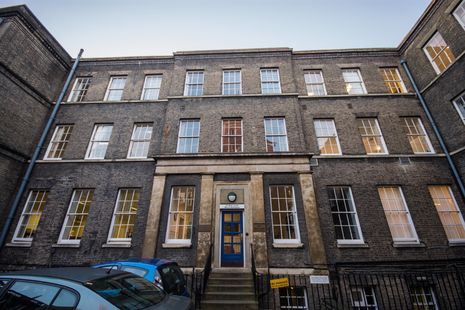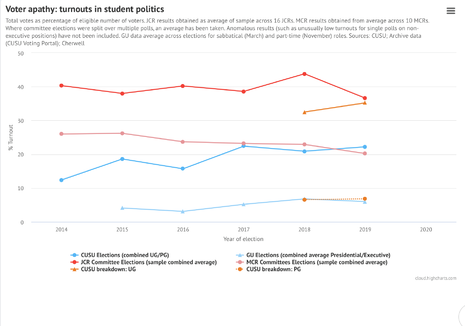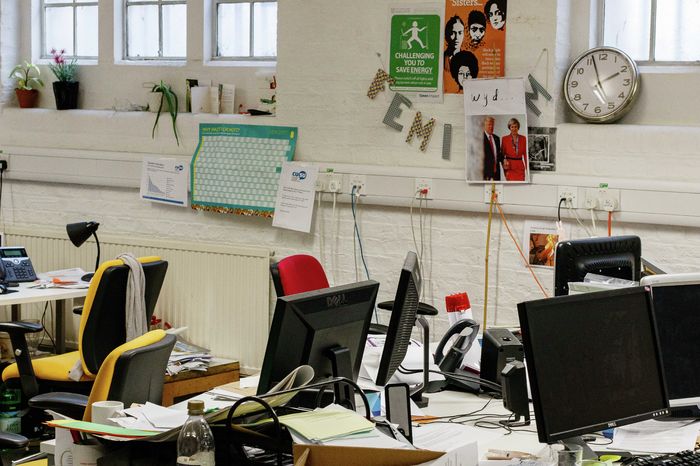It’s ‘new-SU’, but why is engagement with student politics so low?
With turnout for CUSU elections at 18.7% over the past five years, and 5.1% for the Graduate Union over the past six, Varsity explores why engagement with Cambridge’s student unions is so low

Campaigning for the ‘new-SU’ elections has just begun. For the first time on Monday, students will take to the polls to elect sabbatical officers to a new and combined Student Union, with two Co-Presidents to represent undergraduates and postgraduates included among the range of new roles.
Yet the incoming bombardment of campaign material on social media and flyering at Sidgwick belies a profound engagement problem with University-wide student politics. Only 3,009 students – 13.5% of the voting population of students – participated in the vote to merge the former CUSU and Graduate Union (GU) late last year. The National Union of Students (NUS) election, which sends 6 delegates to represent the University, achieved a turnout of only 7.1%.
Data gathered by Varsity shows that, on average, turnout to CUSU elections has stood at 18.7% over the past six years. Turnouts for GU elections are lower, averaging just 5.1% across both Presidential and Executive Committee elections over the past five years.
Lacklustre engagement in student politics, and the chronic sense of misrepresentation which it fosters among students, is nothing new. However Edward Parker Humphreys, current President of CUSU, is hopeful that a combined Student Union will help simplify the message to voters. “We’ll have more resources and be more able to spread the workload throughout the team, which will hopefully free up more time for sabbatical officers to be out in Cambridge engaging students,” he says.

One problem with previous CUSU elections was that most postgraduates were simply unaware they could vote. A breakdown of turnout at last year’s elections shows that undergraduates were five times more likely to vote than postgraduates. “Now that we’re voting for one SU, we’ll hopefully have more postgraduate voting”, remarks Parker Humphreys.
Students nonetheless prefer to keep their politics local. Data obtained from electoral archives for 16 Junior Combination Rooms (JCRs) shows an average participation rate of 39.4% for JCR committee elections over the past five years.* Smaller colleges tend to have much higher participation rates than larger colleges. Peterhouse, which averages around 270 students, recorded a 64.8% turnout at the most recent election.
Among postgraduate MCRs, turnout is lower but, at an average of 23.2% over the past five years, still four times higher than for GU elections.
“It’s always going to be harder at a collegiate university”, says CUSU President, Edward Parker Humphreys. “But it’s worth knowing that we do a lot better than other collegiate universities.” Oxford University’s Student Union held leadership elections earlier this month in which just 12.9% of eligible students voted.
Institutional change, however, will do little to improve perceptions among the student body. Questions about representation and accountability remain hot on the agenda following a succession of high-profile media incidents involving CUSU.
Earlier this month controversy surrounded the NUS delegate elections after a winning candidate was refused a position on the delegation. Though the decision was repealed, the Elections Committee stated that the incident had “highlighted significant issues in relation to how the decisions made by the Elections Committee are communicated to the wider student body in a clear and transparent manner.”
This followed media controversy over a recent motion to ban firearms at CUSU-related events which was significantly altered after vocal opposition from student societies.
Capitalising on these recent incidents, the Cambridge Union Society last week debated a motion entitled ‘This House Believes CUSU does not represent Students’. Of the 85 who attended, 53 voted in favour of the motion, with 23 against.
Speaking to Varsity after the debate, a third-year undergraduate from St Catherine’s College explains why he feels that CUSU does not represent students: “CUSU is overly politicized, it is detached from tangible, practical student issues.”
Varsity also reached out to current and former JCR Presidents to hear what they thought about the issue. What emerged was a clear sense of alienation from the operations of CUSU.
“Most people in Downing are entirely ambivalent about CUSU. It doesn’t come on their radar until CUSU does something that irritates them a little bit”, says Cam O’Connor, outgoing president of Downing JCR. “My opinion is that CUSU should be almost entirely about providing services to, and lobbying for, students” and “turn away from inconsequential political issues”, especially national politics.
Tim d’Aboville, the newly elected co-president of St John’s JCR, describes the relationship between students and CUSU as “basically non-existent, besides the Freshers’ Fair at the beginning of the year”. He says that “we don’t do much with CUSU as a JCR. I think the only thing we do get from them are their condoms and their voting system.”
Two college JCRs, Gonville & Caius and Corpus Christi, are currently disaffiliated from CUSU. They are not represented at Council, though the colleges still pay an annual levy to CUSU after rule changes last year.
Corpus has held a referendum to re-affiliate every year since its departure, but in last year's vote, 67% of Corpus students opted to remain dis-affiliated. This represents a reduced majority from previous years, however the presence of the CUSU President at each year’s debate on the issue is yet to persuade students.
“I know the work sabbatical officers do behind the scenes is excellent”, says Dominic Bielby, Corpus’ current JCR President, citing recent contributions to faculties and education boards. “But I feel they obscure their role, and at times misunderstand what their role should be, when they take on a partisan political voice”.
College loyalties die hard, and the SU’s ability to win over JCRs will be critical to its future success. A healthy turnout at Jesus College – alma mater of Parker Humphreys – helped ensure his victory last year. However other colleges need more persuasion. Last year, Robinson voted in a referendum to stay in CUSU, but by a margin of just 51% to 49%.
That requires some input from JCRs themselves, whose representatives act as key intermediaries between students and University-wide organisations. One MPhil student at the Cambridge Union debate remarks that, while their college committee “may attend CUSU Council, they never tell us anything about that goes on”.
But that also means the experiences of JCR Presidents can have a large impact on student perceptions. This includes how they relay their experiences at CUSU Council, where all affiliated colleges are entitled to send two representatives to propose and debate CUSU policy. Convincing students that CUSU Council motions are debated fairly – and that sabbatical officers do not overstretch their influence – will be a key challenge for future sabb teams.
Students’ perceptions about representation this year will also rest on the range of candidates that choose to stand this year. In the past, CUSU has struggled to ensure contested races. The 2017 elections saw five out of six sabb officers elected unopposed and one position attract no candidates at all.
Parker Humphreys hopes “as many candidates as possible” will run this year, noting that last year’s elections saw all positions contested for the first time in over a decade. “As we go forward and have more contested and better publicised elections, that turnout will creep up over time.”
The perception of student union politics is a long-standing problem which is unlikely to change overnight. The job of this year’s candidates, and the team of sabbatical officers who are elected, will be to convince students that ‘new-SU’ is not just the same old.
[Update 29/02/20. 15:20: This article was amended:
- To clarify that Corpus and Gonville & Caius JCRs, not colleges, are disaffiliated from CUSU.
- The sub-heading was corrected in line with data featured in the article.
- A note has been added to the graph to clarify that GU turnout data was obtained as an average across sabbatical and part-time roles, whose elections are in March and November respectively. A formatting error on the graph was also resolved.]
 News / Caius mourns its tree-mendous loss23 December 2025
News / Caius mourns its tree-mendous loss23 December 2025 News / Cambridge welcomes UK rejoining the Erasmus scheme20 December 2025
News / Cambridge welcomes UK rejoining the Erasmus scheme20 December 2025 News / CUP announces funding scheme for under-represented academics19 December 2025
News / CUP announces funding scheme for under-represented academics19 December 2025 News / King appoints Peterhouse chaplain to Westminster Abbey22 December 2025
News / King appoints Peterhouse chaplain to Westminster Abbey22 December 2025 Interviews / Politics, your own way: Tilly Middlehurst on speaking out21 December 2025
Interviews / Politics, your own way: Tilly Middlehurst on speaking out21 December 2025








